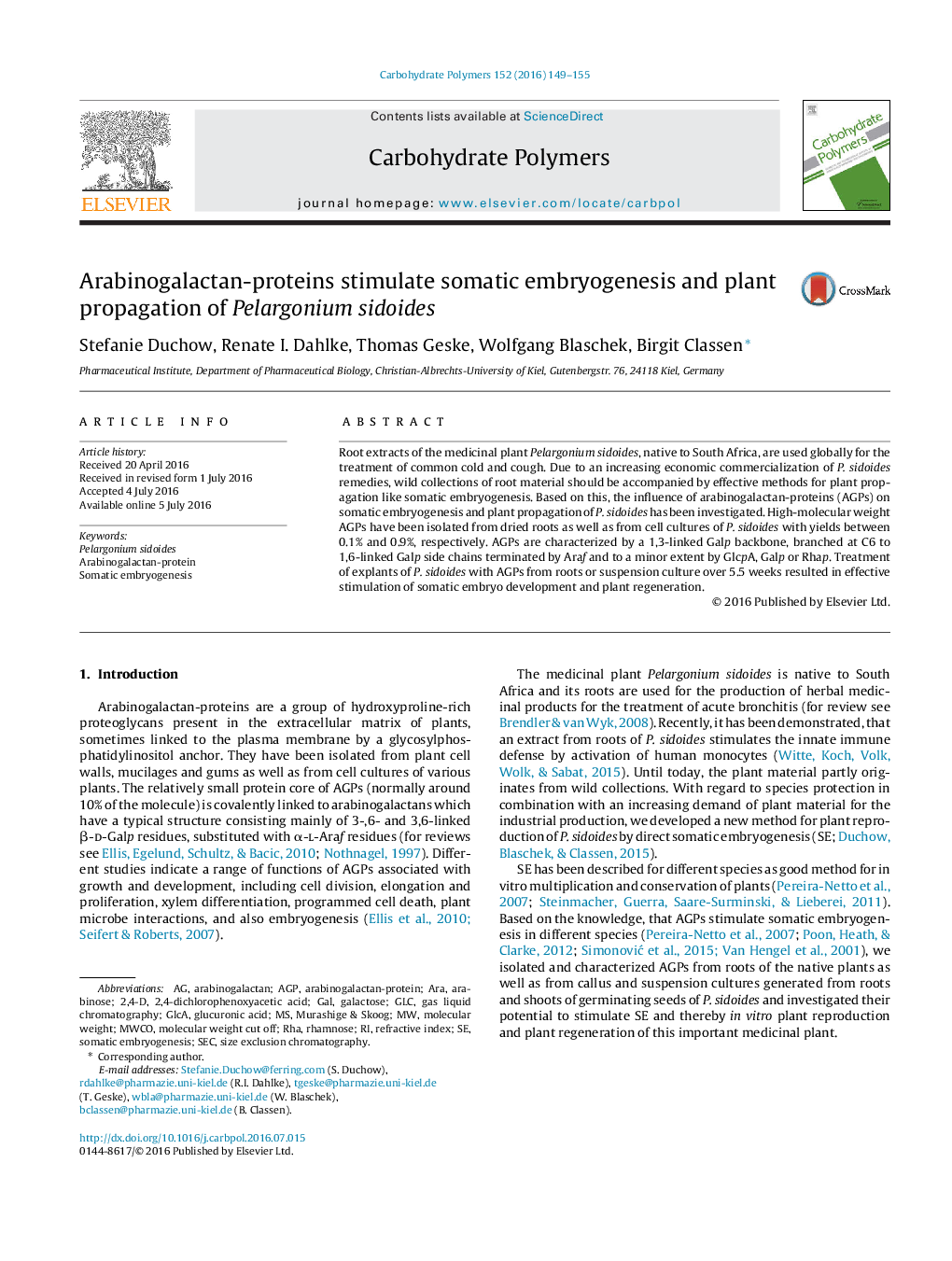| Article ID | Journal | Published Year | Pages | File Type |
|---|---|---|---|---|
| 1373630 | Carbohydrate Polymers | 2016 | 7 Pages |
•Arabinogalactan-proteins (AGPs) from cell cultures and roots of Pelargonium sidoides have been isolated and structurally characterized for the first time.•The polysaccharide moieties of AGPs consist of 1,3-linked galactose core molecules, branched with side chains of 1,6-linked Galp terminated by Araf, Galp or GlcAp.•The amount of protein in AGP from roots is much higher compared to AGP from suspension culture medium (25% versus 10%).•The content of hydroxyproline for both AGPs is comparatively low (2–3%).•Arabinogalactan-proteins have been shown to stimulate direct somatic embryogenesis and plant regeneration in P. sidoides.
Root extracts of the medicinal plant Pelargonium sidoides, native to South Africa, are used globally for the treatment of common cold and cough. Due to an increasing economic commercialization of P. sidoides remedies, wild collections of root material should be accompanied by effective methods for plant propagation like somatic embryogenesis. Based on this, the influence of arabinogalactan-proteins (AGPs) on somatic embryogenesis and plant propagation of P. sidoides has been investigated. High-molecular weight AGPs have been isolated from dried roots as well as from cell cultures of P. sidoides with yields between 0.1% and 0.9%, respectively. AGPs are characterized by a 1,3-linked Galp backbone, branched at C6 to 1,6-linked Galp side chains terminated by Araf and to a minor extent by GlcpA, Galp or Rhap. Treatment of explants of P. sidoides with AGPs from roots or suspension culture over 5.5 weeks resulted in effective stimulation of somatic embryo development and plant regeneration.
